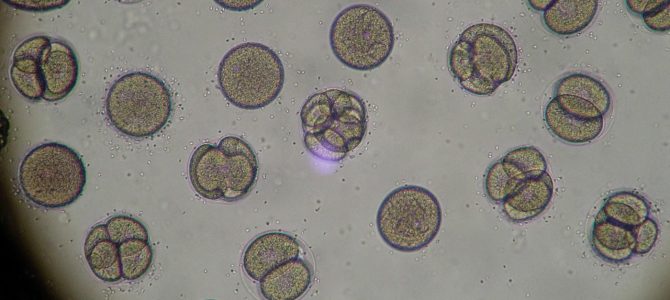
“Couples are turning extra IVF embryos into jewellery.” The headline reads like a reporter’s line in a dystopian novel, but it’s not. It’s not from some gallows humor parody site either. It’s a real headline from an online parenting site. And the author isn’t warning us of the fast-approaching implosion of morality: not a whiff of the sinister can be detected anywhere in this post—not a line of cynicism, skepticism, or even concern.
“Now Ms Stafford has all of her babies with her every day—including seven embryos in her heart-shaped pendant worn close to her heart, always,” writes the author. She’s breathtakingly unaware of the grotesqueness of her story.
“Donation wasn’t an option, the annual storage fee was an added financial strain, and disposing of them unimaginable,” she writes. “So when the NSW couple heard about Baby Bee Hummingbirds, an Australian company turning embryos into keepsake jewelley [sic], they jumped at the chance.”
This Article Celebrates the Destruction Of Life
A “difficult decision” has been solved, reads the subhead. This article is a celebration, praising an “innovative Australian company” that has found a “solution” for what to do with unused embryos from IVF cycles.
“I wanted to keep having more babies but the emotional toll, plus financially it was too much,” Belinda explains. “Donating our embryos wasn’t an option for us and I couldn’t justify the yearly storage fee. I’d heard others had planted them in the garden but we move a lot, so I couldn’t do this. I needed them with me.”
Belinda and her husband went through 14 IVF cycles, resulting in three children (that made it to birth). But apparently the possibility of offering their embryonic babies up for adoption was simply written off. Perhaps the idea of letting someone else raise her “extras,” completely divorced from their biological parents, didn’t set right with her. Ritually “planting” them wasn’t quite the right emotive expression either.
This Company Profits from Death
Enter Baby Bee Hummingbirds to turn Shaun and Belinda’s unwanted (but not that unwanted) children into “keepsakes.”
“I [sic] finally at peace and my journey complete,” Belinda says. “My embryos were my babies – frozen in time. When we completed our family, it wasn’t in my heart to destroy them.”
But she did destroy them. And then she bought them back in another form. The commodification of children is complete, thanks to the deep pockets and weighty sentiments of couples who wanted children so desperately, they were willing to see some of those very children, their own flesh, destroyed to fulfill their desire.
You might say this gives new meaning to the phrase “wearing your shame.” But Belinda certainly doesn’t see it that way. This new commodity didn’t arise via the brash boasting of women who “shout their abortion” on social media. It came quietly, strangely, through couples who know they made not just “products of conception,” but babies.
Sentiment Is A Twisted Attempt At Love
The widest fig leaf of human sacrifice (nearly 60 million preborn babies have been sacrificed on the altar of convenience since Roe V. Wade) is not the cold, clinical euphemisms chanted by the priesthood of death, the abortionists. It is sentiment. It is the appearance of—perhaps even a twisted attempt at—love.
But such callous treatment of human life isn’t about serving others. It’s not even about science. We center our emotional, physical, and spiritual lives on the self and its fervent wants. Selfishness is the default way of life: it’s the struggle we either succumb to or fight every moment of every day. What couples who undergo IVF cycles do with their “leftovers” serves only to assuage guilt over the destruction they’ve wrought on the journey toward greater happiness.
The founder of this pioneering jewelry company described their work thus: “I don’t believe there is any other business in the world that creates jewelry from human embryos, and I firmly believe that we are pioneering the way in this sacred art, and opening the possibilities to families around the world.”
A sacred art, she says. Perhaps, amid the noise of cognitive dissonance, she is saying there’s something sacred about human life. But more likely, she refers to the sacred nature of sentiment—sola affectio. This art isn’t in service of humankind, for its preservation and wellbeing. It is in service to our feelings.
We Can’t Treat Human Life This Way
I am happy that Shaun and Belinda are experiencing the joy of parenthood. I am thankful for their three sweet children. But to purposely destroy human life to realize one’s desires is to deny the sacredness of human life. No price, no crafted beauty, no adornment, no matter how close to it lies to one’s heart, can restore those lives.
No doubt this “innovative” approach of crafting embryos into keepsakes will take off here in the U.S. Wealthy women who abort their children might “regretfully” ask for the heart tissue of her preborn baby for pendant necklaces; the eyes, for a pair of earrings perhaps; tiny, delicate fingers for a ring. She cannot raise him, she tells herself. But she can hold him close forever.









